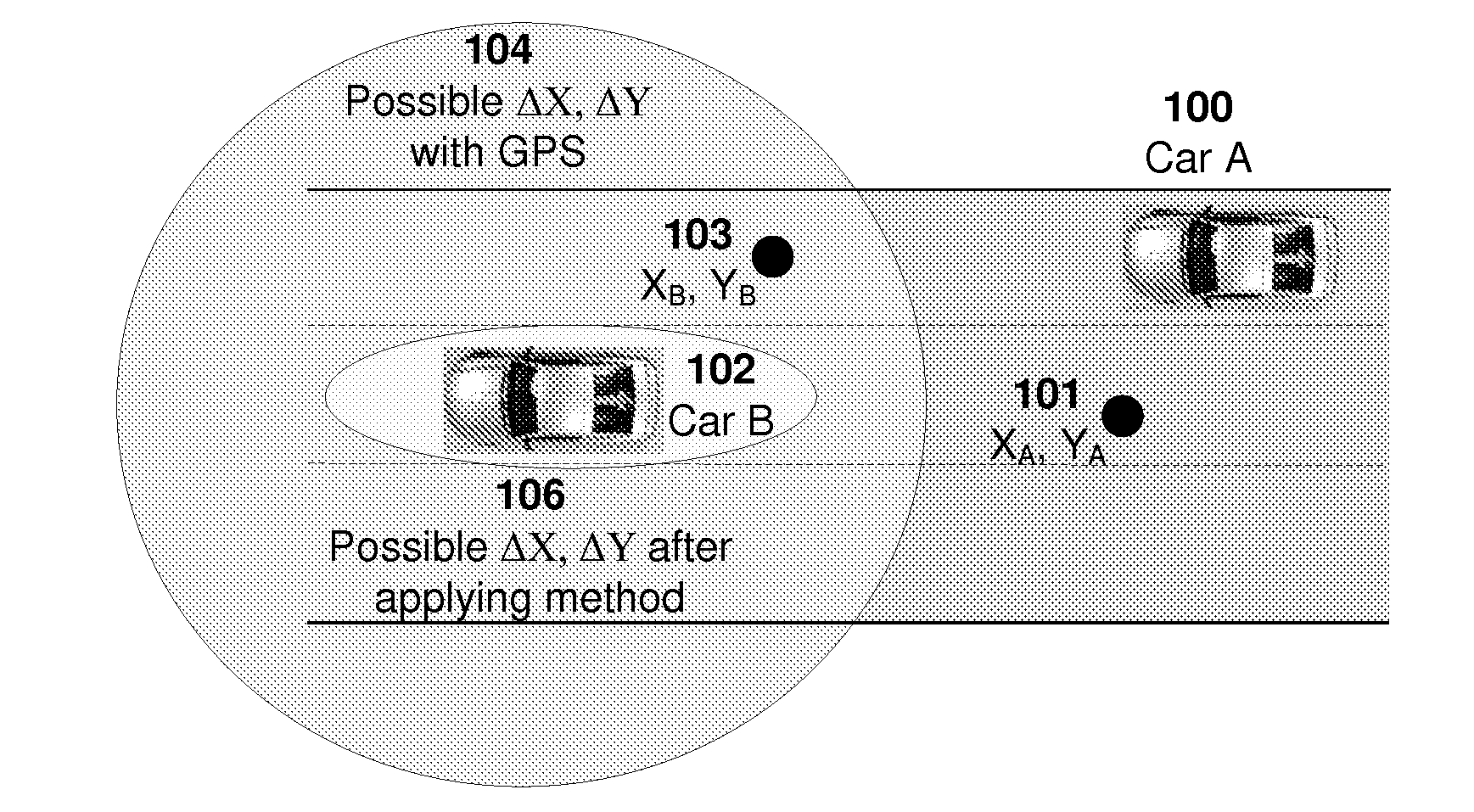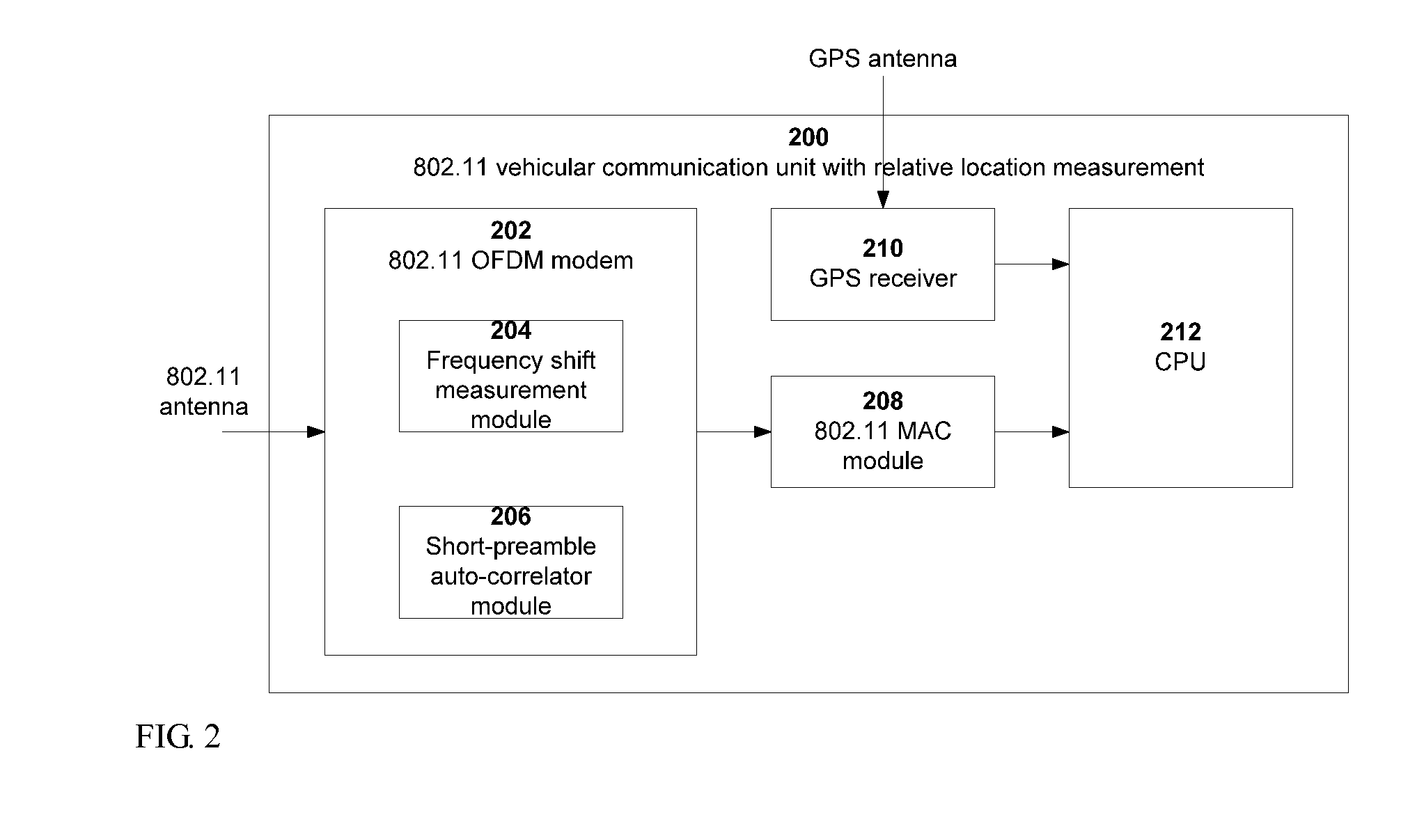Relative vehicular positioning using vehicular communications
a vehicular communication and relative technology, applied in the field of vehicular communication, can solve the problems of two gps receivers, the error of a typical gps receiver can be up to 10 meters, and the inherent inaccuracy of gps, so as to improve the relative positioning system, reduce traffic accidents and fatalities, and increase the relative position accuracy
- Summary
- Abstract
- Description
- Claims
- Application Information
AI Technical Summary
Benefits of technology
Problems solved by technology
Method used
Image
Examples
Embodiment Construction
The invention provides methods and systems through which a first “measuring” vehicle (also referred to herein as “car”), exemplified in FIG. 1 by a car A, determines a position of a second “measured” vehicle, exemplified in FIG. 1 by a car B, relative to its own position. Cars A and B are shown driving to the left on a three-lane highway. Instant positions of car A, indicated by (XA, YA) point 102, and car B, indicated by (XB, YB) point 104 are provided for example by a GPS measurement. This measurement contains error, and with the additional error of the map database, it may provide an inaccurate lane position for both cars. The accumulated error for cars A and B is illustrated graphically by a circle 106. In FIG. 1, the (erroneous) instant X,Y values indicate that car B drives on a lane right of car A, which is of course wrong and opposite to the real situation.
A method of the invention corrects the wrong conclusion drawn from the instant position data, and identifies correctly th...
PUM
 Login to View More
Login to View More Abstract
Description
Claims
Application Information
 Login to View More
Login to View More - R&D
- Intellectual Property
- Life Sciences
- Materials
- Tech Scout
- Unparalleled Data Quality
- Higher Quality Content
- 60% Fewer Hallucinations
Browse by: Latest US Patents, China's latest patents, Technical Efficacy Thesaurus, Application Domain, Technology Topic, Popular Technical Reports.
© 2025 PatSnap. All rights reserved.Legal|Privacy policy|Modern Slavery Act Transparency Statement|Sitemap|About US| Contact US: help@patsnap.com



